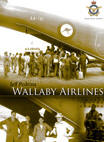|
Radschool Association Magazine - Vol 30 Page 11 |
|
|
Privacy Policy | Editorial Policy | Join the Association | List of Members | Contact us | Index | Links | Print this page |
|
|
|
|
|
THE Origins of the Callsign “Wallaby”
Don Pollock
As the
RAAF is planning to demob the Caribous, it is an appropriate time that the
origins of “Wallaby” are explained. Like most tales, the origins of the
name “Wallaby Airlines” was a combination of different events. To the best
of my recollections this is how the name was formed; a name which later
became famous in
About a year before the formation of RAAF Transport Flight Vietnam (RFTV), a group of young pilots from 38 SQN had formed an association with several Qantas air hostesses who shared a flat in Sydney’s eastern suburbs. The association was neither constant nor regular. The girls had irregular schedules in those days and the pilots were pulled at a moment’s notice for a medivac (medical evacuation flight), a SAR (Search and Rescue) flight for some lost mariner or bush walker or the many detachments to other bases. Accordingly, although the relationships were friendly they were infrequent. However, occasionally some pilots turned up at the girls’ flat and a Chinese meal was shared or we just sat and talked or together we organised a party on the spot. The relevance of this casual relationship and its importance to the “Wallaby” call-sign will soon become apparent.
In late 1963 we heard that crews had been picked for the ferry of the Caribous from the de Havilland factory at Downsview, Canada, to RAAF Base Richmond in Australia. Most of the co-pilots on Caribou ferry I and 2 were also the “boggies” (Se Note 1) who formed the nucleus of the contact with the air hostesses. The ferry further disrupted any contact with the girls.
|
|
|
Q. What the difference in praying in church and praying at the race track? A. At the race track you really mean it.
|
|
|
Both the first and the second Caribou ferry had been completed by June 1964. During the second ferry through RAAF Base Butterworth, Malaysia the pilots on that ferry learned that a flight of Caribou aircraft would be committed to operations in Vietnam. Two pilots heard about it in an unusual manner.
After lunch each day officers would go into the officer’s mess lounge room to listen to the world news on the radio. Believe it or not, back then people would sit and look at the radio as intently as people today look at a television. On this occasion l can remember sitting beside John Staal when we heard the announcement that a flight of RAAF Caribous were to be despatched to Vietnam. We looked at one another and bolted for the aircraft lines.
Simultaneously we had guessed that SQN LDR Chris Sugden, (see Note 2), the leader of our ferry of three aircraft, would be the first CO as he was the most widely experienced officer on our squadron. He was down at the lines inspecting a Caribou and we wanted to be his first volunteers. After about a kilometre run- not a jog, and it was about half a mile then, we both ran up to Suggy absolutely puffed, saluted and gasped out the news and begged to be allowed to join him if he lead the Caribous into Vietnam. Our Caribou ferry had been delayed by suspected sabotage (see Note 3) so he had got to know us fairly well. He agreed to recommend us if he was selected to lead the first group. With a bit of luck we were going to war!
Back in Australia a week later those that were picked for Vietnam were given pre-embarkation leave then briefings and some intensive training. We started to think about what we might take to Vietnam to identify ourselves; slouch hats, flags, koalas? All the suggestions were dismissed as “kitchy”, too large or too expensive.
During
this busy period the friendship with the Qantas air hostesses was renewed.
At one of the get togethers a boggy (it may well have been John Staal) saw
one of the girls with a Qantas pin; the golden kangaroo. We asked the
girls if they could get us some pins. They told us they would try and also
that they would organise a send off party for us. The party was a happy
affair. I remember three people from that evening. Mick Gwinn
Sometime later the pins were given to Suggy who distributed them amongst all members of the RTFV group who flew from Malaysia into Vietnam. I think each member had about 5 pins. The aim was to award the pins to those people in Vietnam who gave us a special service.
A day or so after arriving in Vietnam Suggy gave a pin to the Base Commander Vung Tau, Colonel Dillard, US Army, (See Note 4). Dillard was a most professional officer who did what he could to get us kitted, billeted and supplied to become an effective unit without delays. Likewise Major Dillard, US Army, the Executive Officer to the colonel (but no relation) received a pin. Other people around Vung Tau also received the kangaroo aka Qantas pins.
Major Schaumberg, USAF, was our liaison officer and he was most diligent in getting RTFV operational “in country”. RTFV had been integrated as part of the USAF air support services and was tasked by the USAF but most of the tasks were supporting the US Army and the South Vietnamese Army. Our induction had been completed in record time thanks in a large part to Schaumberg. The only item requiring agreement was a unit call-sign which would identify us for all future operations.
So when Suggy gave Schaumberg a Qantas pin as appreciation for his services to us the conversation went something like; “What is this animal called, Chris?”. Schaumberg sometimes had a peculiar manner of pronouncing and emphasising each syllable.
On this occasion in an almost Southern drawl Schaumberg said “An- I- Mal” although I do not recall Schaumberg being a Southerner. Chris replied. “A Kangaroo. That could be a suitable name for our squadron call-sign?”. Schaumberg was almost aghast. “A Kan-Ga-Roo? Hell Chris, that’s not an easy name to pronounce. The Vietnamese would find it impossible. Are they called something else”. Chris replied. “A Wallaby”.
The name had an instant appeal for Schaumberg. He said it several times. “Wal-La-By” sounded much better to Schaumberg than ”kangaroo.” It was Schaumberg who then said that he would arrange for “Wallaby” to become the identifier for the RAAF Transport Flight Vietnam (RTFV) which later became 35 SQN.
Thus “Wallaby” Airlines was named after a casual relationship with the QANTAS kangaroo.
Thanks to Ken Howard, Peter Sugden, Kev Henderson and Jeff Pedrina whose worthy book, “Wallaby Airlines,” caused me to finally write down these notes.
|
|
|
And the story goes that infuriating “Look at me, Look at me, I’m the
story” woman, Barbara Walters of the US TV show 20/20, did a story on
gender roles in Kabul, Afghanistan, several years before the Afghan
conflict. She noted that women customarily walked five paces behind
their husbands.
She recently returned to Kabul and observed that women still walk behind their husbands. Despite the overthrow of the oppressive Taliban regime, the women were happy to maintain the old custom.
Ms. Walters approached one of the Afghani women and asked, 'Why do you now seem happy with an old custom that you once tried so desperately to change?'
The woman looked Ms. Walters straight in the eyes, and without hesitation said, 'Land Mines.'
|
|
|
NOTES:
NOTE 1. According to the Urban Dictionary “boggie” is a contraction of “bograt”. Used exclusively and often derisively for any RAAF officer having the rank of Officer Cadet, Pilot Officer or Flying Officer. Can anyone assist with the origins of this name? Perhaps it is a development from “bogey”?
NOTE 2.
Squadron Leader Chris Sugden (Suggy) the quintessential quiet achiever.
Possibly influenced by the example of his father, who lost an arm at
Gallipoli in WW1, Suggy began his military career early as a member of the
10th Light Horse. Later on he avoided RAAF parades occasionally stating
that he was the only officer in the RAAF who had carried a sword as a
weapon of war and therefore he was not going to carry one on parade. He
and his wife managed their own nursing home at Windsor while he was a
member of the RAAF. After he retired from the RAAF he farmed at Eungai
Creek; later on, after lessons on laying bricks, he
Suggy (right) was possibly the only RAAF officer who flew in three wars in three different roles; Boston bombers in WW2, Meteor fighter bombers in Korea and transport Caribous in Vietnam. Suggy decided to test the ability of the Caribou to take off on one engine. He did this flight in Malaysia before the Caribous deployed to Vietnam just in case the situation arose when a single engine take off would be required. Some months later such a take off (the only operational one that I know off) was required from an airstrip in the Mekong delta. Daylight was rapidly disappearing and the area was known as unfriendly where a mortar or two could be expected after nightfall when a friendly forces reaction time would be delayed. The take off was successful. Fortunately for all concerned Suggy was captain of the aircraft when it had the engine problem. He did not have to make the decision of authorising one of the “boggies” to do it had it happened to them. On the other hand he had been such an inspiration to all that any boggie crew probably would have flown it out and told him later.
At his 80th birthday party Mike Lancaster, Suggy's right hand man in Vietnam, sent the message. "What I would really like to place on record is my enormous respect for Chris as a remarkable original thinker and an outstanding leader. The official histories will never be able to reflect how lucky we were in having Chris appointed as the first commander in Vietnam. He had the ability to nut things out from first principles and if the answer didn't agree with the book so much bad luck for the book. Without doubt, he was the strongest and best commander I had during my RAAF career."
Suggy was very proud of his part in RTFV. He was especially pleased that the popular reunions included all ranks and all musterings. Sadly Suggy died just a week before the US Air Medal was finally presented to all Wallaby Airlines aircrew who had served in Vietnam; 42 years after the original recommendation. His elder son, Peter, said his dad was very happy that the efforts of the loadies were also recognised in the awards.
NOTE 3.
The day arrived when the first group of RTFV was to fly from Butterworth
to Vung Tau. The
NOTE 4. (a) To extend the range of the Caribou during the ferry, 2 large fuel bags were placed in each aircraft. Electric pumps were attached to the tanks so fuel could be pumped into the normal fuel system (in the wings) as required during flight. On several occasions these fuel bags burst during flight. An examination of each event indicated a pin had been pushed through the bag. The lamination construction of the bag prevented a leak occurring immediately. Sometimes the damage developed over a month before the bag suddenly burst. When it did burst several hundred litres of highly volatile aviation gasoline sloshing around the cargo hold stung the eyes and increased the heart pulse rate of all on board because of the increased risk of an uncontrollable fire.
What to do? Our crew was halfway across the Bay of Bengal between Calcutta and RAAF Butterworth when a bag burst. There was no checklist for this event so the loady open the rear ramp a bit to get rid of the fuel which we hoped would solve the problem. Some minutes later the crew had the dreadful thought that perhaps some of the fuel would get into the anti collision rotating beacon on the underside of the aircraft and thereby cause an explosion. However if the beacon was switched off would that cause an increased chance of an electric arc in the system. We switched off the beacon and flew on arriving safely at our destination some two hours later.
(b) Many of the clevis pins attaching the engine
manifold outlets to the exhaust ring stack had been over-torqued at some
stage before the aircraft were handed over to the RAAF. Consequently after
long flights
(c) At Aden a seal to the hydraulic independent propeller governing unit had a leak. When its sump was inspected a quantity of abrasive powder was detected. Only one unit was replaced on that ferry but other units had to be cleaned out in Canada. Obviously someone knew we were off to Vietnam before we did. One does not have an entirely comfortable feeling flying an aircraft when there is a likelihood of sabotage.
(POLLOCK, Donald Thomas, was a Flying Officer General Duties Pilot with RAAF Transport Flight Vietnam (RTFV) from July 1964 to February, 1965 – tb)
|
|
|
Dr. Levi was a renowned dentist who earned his undergraduate, graduate, and medical degrees in his home town and then left for the Central Coast, where he quickly rose to the top of his field. Soon he was invited to deliver a significant paper, at a conference, coincidentally held in his home town. He walked on stage and placed his papers on the lectern, but they slid off onto the floor. As he bent over to retrieve them, at precisely the wrong instant, he inadvertently farted. The microphone amplified his mistake resoundingly through the room and it reverberated down the hall. He was very embarrassed but somehow regained his composure just enough to deliver his paper. He ignored the resounding applause and raced out the stage door, never to be seen in his home town again.
Decades later, when his elderly mother was ill, he returned to visit her. He reserved a hotel room under the name of Epstein and arrived under cover of darkness. The desk clerk asked him, "Is this your first visit to our city, Mr. Epstein?" Dr. Levi replied, "Well, young man, no, it isn't. I grew up here and received my education here, but then I moved away." Why haven't you visited?" asked the desk clerk. Actually, I did visit once, many years ago, but an embarrassing thing happened and since then I've been too ashamed to return." The clerk consoled him. "Sir, while I don't have your life experience, one thing I have learned is that often what seems embarrassing to me isn't even remembered by others. I bet that's true of your incident too." Dr. Levi replied, "Son, I doubt that's the case with my incident." "Was it a long time ago?" "Yes, many years." The clerk asked, "Was it before or after the Levi Fart?"
|
|
|
Wallaby Airlines – the book.
While in Townsville for the farewell of the Caribou, like a lot of other people, we bought the book, “Wallaby Airlines” which was written by Jeff Pedrina.
We’ve since read it, and although it's a very good read, we must say we’re a bit disappointed in it. We feel it should have been titled, “A Pilot's Tales with Wallaby Airlines” because on reading the book, you find it's all about one bloke's experiences while flying with RTFV, not, as it says on the back cover, about the people and personalities Jeff met while in country. You'd also be excused for thinking Wallaby Airlines' aeroplanes were serviceable all the time too. In our opinion it really doesn't tell the true story.
It seems that the average aircraft maintenance bloke didn’t do a thing, in fact, from reading the book it seems there weren’t any airmen even there. Jeff’s book gives the impression that everything was done by the officer class, there were no airmen cooks to cook his meals, no airmen clerks to prepare his pay, no airmen MT fitters to fix his jeep, no airmen elecos to make sure his lights worked at night, no airmen plumbers to make sure his toilets worked and definitely no airmen who worked hard and late into every night to keep his 7 aircraft flying, all this was conceivably done by the Squadron Engineering Officer, or if he was too busy the pilots and the loadies would do it......
That’s funny – that’s not how I remembered it!!!!!
|
|
|
The Navy Chief noticed a new seaman and barked at him, "Hey you, get over here! What's your name sailor?"
"John," the new seaman replied.
"Look, I don't know what kind of bleeding-heart pansy crap they're teaching sailors in boot camp these days, but I don't call anyone by his first name," the chief scowled. "It breeds familiarity, and that leads to a breakdown in authority. I refer to my sailors by their last names only; Smith, Jones, Baker, whatever. And you are to refer to me as 'Chief'. Do I make myself clear?"
"Aye, Aye Chief!"
"Now that we've got that straight, what's your last name?"
The seaman replied "Darling, My name is John Darling, Chief."
"Okay, John, here's what I want you to do ...." |
|
|
|
|
|
 Vietnam amongst many armed services and peoples including US, New Zealand,
Thai, Korean and Vietnamese Armed Forces, French plantation operators, the
occasional Brit on some civil aid project and of course the Australians
who served both in the armed forces and the civil assistance programs.
Vietnam amongst many armed services and peoples including US, New Zealand,
Thai, Korean and Vietnamese Armed Forces, French plantation operators, the
occasional Brit on some civil aid project and of course the Australians
who served both in the armed forces and the civil assistance programs.
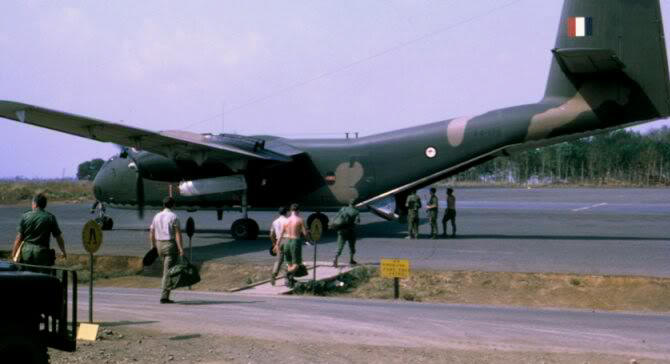
 among the loadmasters because he was a big gentle giant and towered over
everyone else, John Staal with Geertje arrived late as they had gone to a
night club where the leading talent had sang a funny song about Vietnam
and Delas England, a hostie, who had a small cardboard box jammed packed
with a few hundred kangaroo pins; a great gift from Qantas.
among the loadmasters because he was a big gentle giant and towered over
everyone else, John Staal with Geertje arrived late as they had gone to a
night club where the leading talent had sang a funny song about Vietnam
and Delas England, a hostie, who had a small cardboard box jammed packed
with a few hundred kangaroo pins; a great gift from Qantas.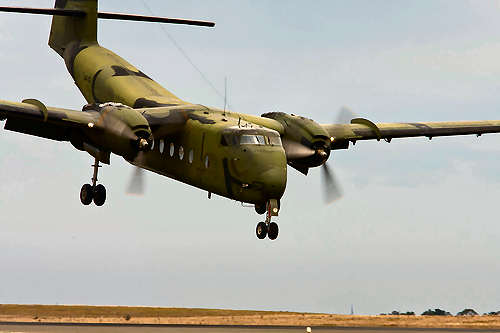
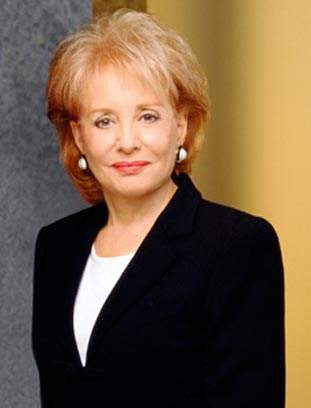
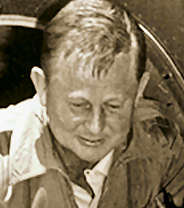 built his retirement home of double brick at Mackville and named it "Terra
Firma"- the more firma the less the terror.. It was a very functional
house having at least a dozen power points in the kitchen so he would
never have to use a double adapter again. He brewed his own beer, played
golf and became President of the Nambucca Shire.
built his retirement home of double brick at Mackville and named it "Terra
Firma"- the more firma the less the terror.. It was a very functional
house having at least a dozen power points in the kitchen so he would
never have to use a double adapter again. He brewed his own beer, played
golf and became President of the Nambucca Shire. meteorological forecast report (Wx) had a major storm on our route. The Wx
did not deter Suggy so off he went and I followed with Kev Henderson as
the co-pilot. Apparently most of the US Army at Vung Tau said “The Ossies
will not make it today.” Apparently Col Dillard disagreed. He said that he
had served near Australians in Korea and they always got through. That we
did arrive as planned vindicated Gillard's opinion, set the scene for the
"Can Do" attitude which was almost the unofficial motto for RFTV (Wallaby
Airlines) and caused some amusement to Suggy "that some Yanks thought we
would not get through."
meteorological forecast report (Wx) had a major storm on our route. The Wx
did not deter Suggy so off he went and I followed with Kev Henderson as
the co-pilot. Apparently most of the US Army at Vung Tau said “The Ossies
will not make it today.” Apparently Col Dillard disagreed. He said that he
had served near Australians in Korea and they always got through. That we
did arrive as planned vindicated Gillard's opinion, set the scene for the
"Can Do" attitude which was almost the unofficial motto for RFTV (Wallaby
Airlines) and caused some amusement to Suggy "that some Yanks thought we
would not get through."
